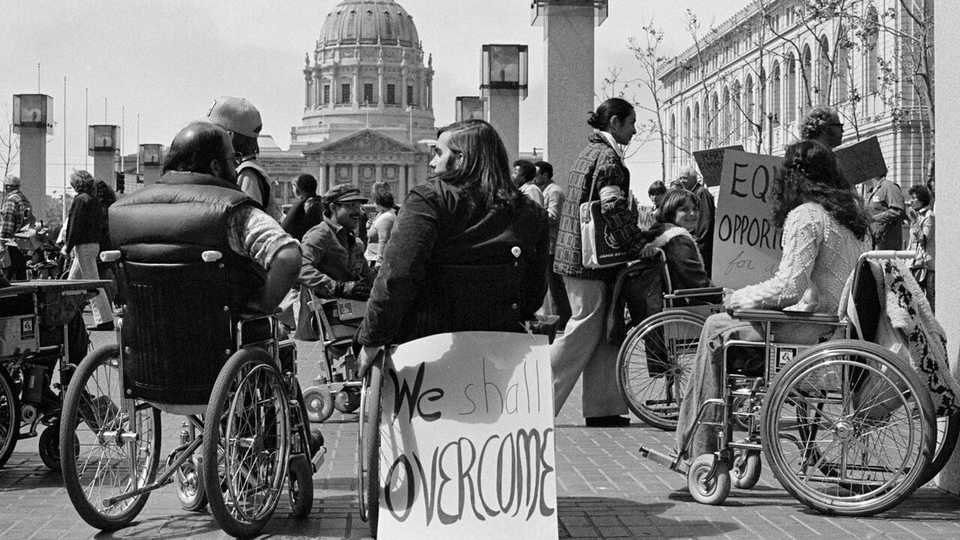Toolkit Table of Contents
When advocating for people with disabilities, it is important to develop a basic understanding of the history of this movement to understand where we have been and what work is still left to do. There are a wealth of stories and champions of the movement worth highlighting, but for the purposes of this toolkit we'll focus on the Section 504 Protests and the Americans with Disabilities Act.
Photograph by HolLynn D'Lil, distributed under a CC BY-NC-SA 3.0 license.
Section 504 Protests
In 1973, Section 504 of the Rehabilitation Act was passed into law, making it the first piece of federal civil rights protection for people with disabilities.1 This landmark legislation dramatically challenged previous cultural perceptions of disability, shifting it from an individual problem to a societal and institutional one.
Although Section 504 passed, the necessary anti-discrimination protections were not being implemented on a national scale. In 1977, a fierce group of disability rights champions and their allies occupied the Health Education and Welfare building in San Francisco to demand the long-overdue implementation of Section 504. Their occupation of the building sparked a national movement, inspiring disability civil rights activists across the country to demand the protections promised by the legislation.2 The activists in San Francisco became the symbol of this movement, maintaining their sit-in for 26 days.
Upon the signing of Section 504 in response to the 504 Protests, the disability civil rights movement solidified as a critical part of US history and demonstrated that disabled people can advocate for their own rights rather than wait for others to advocate for them. The motto of the movement was “Nothing about us without us,” which highlights the importance of including disabled people in the conversation and still rings true today.
Want to learn more about the 504 Protests? Watch this video:




